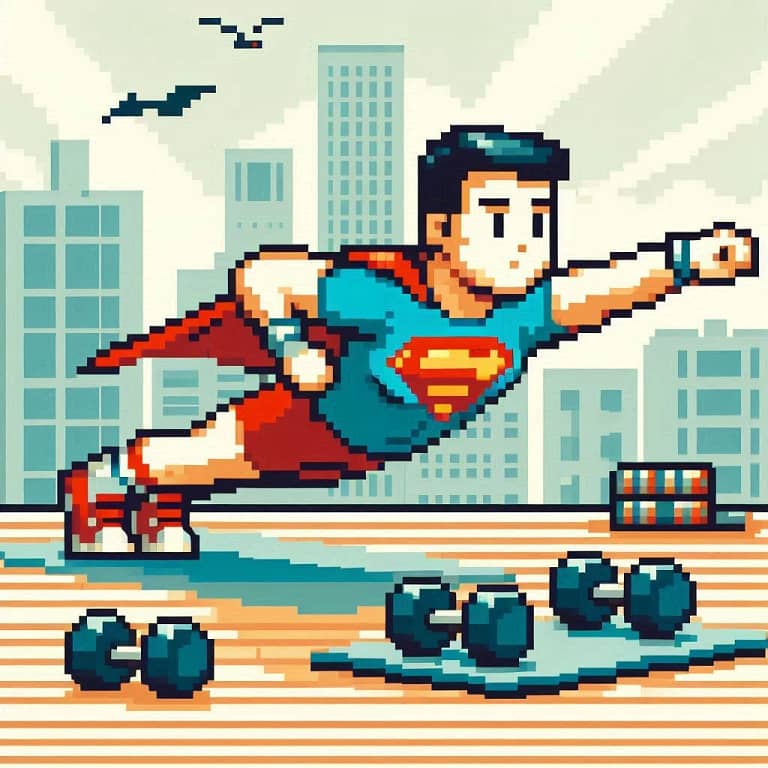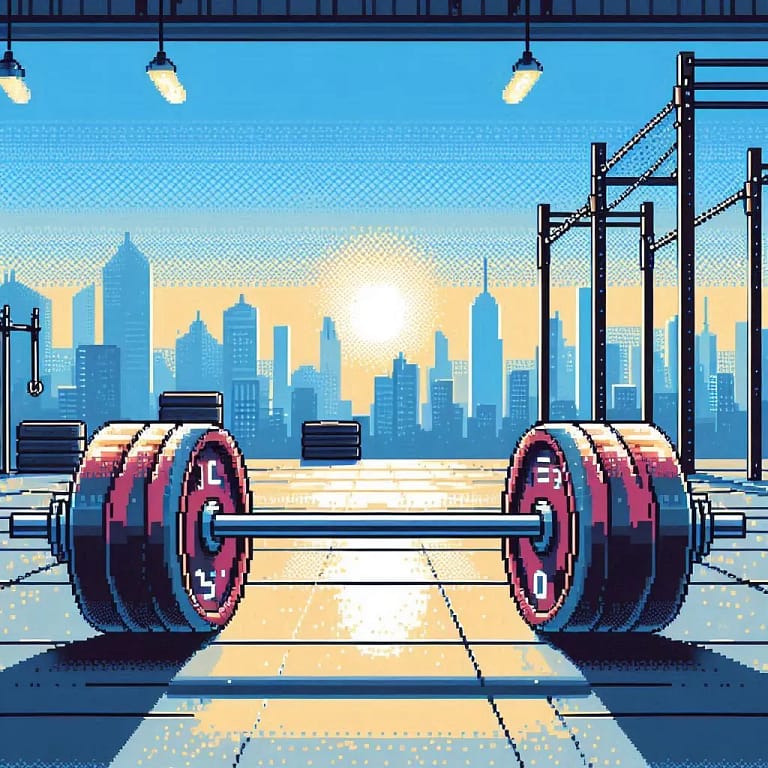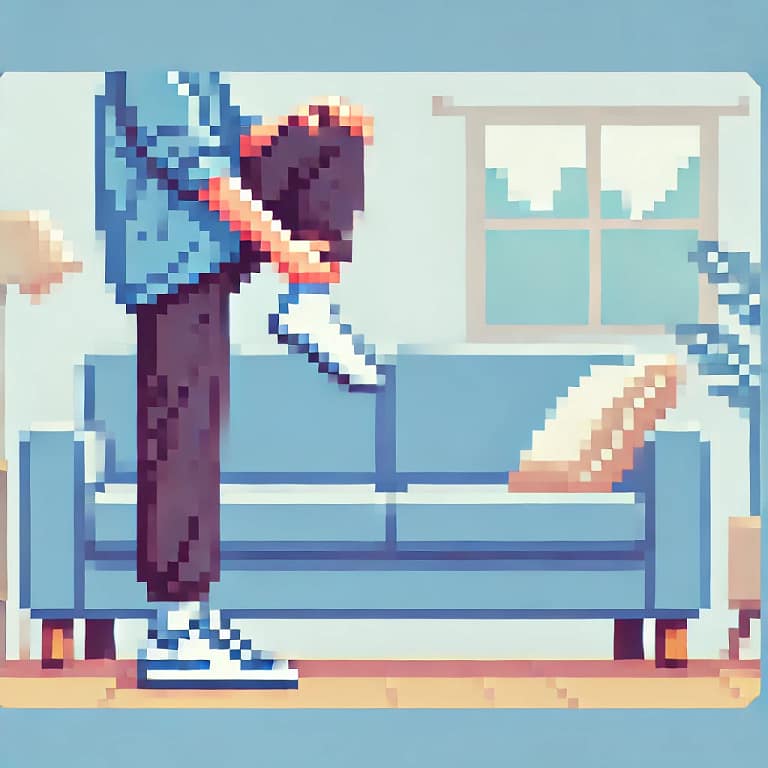Are You All about the Ass? Building Glutes without Equipment
A Minimalist’s Training Plan to Build Amazing Glutes
Are you all about the butt?
Glute training has become popular. Probably more for aesthetic reasons than for the health benefits but that’s ok. I’m glad the glutes are finally getting the attention they deserve.
When it comes to maintaining a strong, healthy body, your focus needs to be all about the ass, specifically the gluteus maximus, medius and minimus. Exercises like barbell hip thrusts, back squats and Romanian deadlifts are becoming more popular for their ability to overload the glutes.
But if you don’t have these pieces of equipment that’s ok. Glute training doesn’t require heavy barbells or big machines. Below is a simple glute training program that requires NO equipment to perform other than a bench or a couch.
But first let’s outline the benefits of glute training.
Reduced Low Back Pain and Improved Posture
The glutes are the largest muscle in the body and play a role in all kinds of movements including hip extension and external rotation. That’s right, the glutes are involved in hip extension, so if you plan on pelvic thrusting all over the place, you’d better have functional glutes.
The glutes also contribute to maintaining an upright posture by stabilizing the pelvis and lower back. When your glute muscles are weak, your body will often compensate by overloading other muscles, in this case, the low back erectors, adductors (inner thigh muscles) and hip flexors. This can cause you to have a tilted pelvis. Anterior pelvic tilt is where the front of the pelvis tilts forward and the back of the pelvis tilts upward. This position of the pelvis puts extra strain on the lumbar spine.
This tightness of the low back muscles and immobility of the hips is a terrible combination for chronic back pain. Strong glutes help prevent excessive anterior pelvic tilt.
This means that strong healthy glutes can reduce strain on the lower back by reinforcing good posture and the natural curvature of the spine. Weak glutes are a major indicator of chronic low back pain. This is most common in individuals who sit for long periods or those who are involved in a lot of bending and twisting movements.
By strengthening the glutes, you offload some of the forces put on the lower back.
Improved Hip Mobility and Stability
The glutes are important for hip health. More specifically, the gluteus medius and minimus are important for hip health. They are responsible for external rotation of the hip and stabilizing the hip joint during movements like walking, running and squatting.
The glutes work in coordination with the other muscles of the lower body to provide balance and power during dynamic movements like jumping and sprinting.
When these muscles are weak, you may experience more hip and knee pain. Also, your chance of hip impingement and hip labral tears is higher.
The glutes are essential not just for injury prevention, but also for movement efficiency and athletic performance. The glutes are involved in nearly every type of movement. Having strong glutes just makes life easier.
I’ve worked with clients who have experienced this first hand. As we strengthen their glutes, they tell me that activities like hiking, biking and getting on and off the floor get easier and they experience less joint pain.
How to Train the Glutes with NO equipment
If you aren’t all about the ass now, you will be after you see how easy these exercises are to implement into your training. Below are 3 bodyweight glute exercises to help you not only target your glutes, but develop a mind muscle connection with them so that you can engage them in everyday activities as well.
I’m going to outline the 3 movements first, then show you how to implement them into a training plan. Again, these exercises require no equipment other than a bench or a couch.
Since we are using bodyweight resistance only, it is important that you control each and every repetition of every exercise below. Your goal should be to develop what is called a “mind muscle” connection with your glutes. This is going to require you to control every rep.
Let’s get into the exercises.
Glute Bridge
We’re going to start the circuit off with the glute bridge. This is a great glute-priming exercise. It’s very easy to perform yet still allows you to feel your glutes with little effort.
To perform a glute bridge:
- Lie on your back with your knees bent and feet flat on the floor, shoulder width apart. Your arms can rest by your sides.
- Tuck your pelvis under, and push your heels into the floor, squeezing your glutes as you extend your pelvis towards the ceiling. Squeeze until your hips are locked out, forming a straight line from your shoulders to your knees.
- Hold this position at the top for a second or two before lowering your hips back to the floor slowly.
- Perform 10-20 repetitions.
Focus on engaging your glutes, not your lower back, throughout the movement
If you have a booty band at your disposal, place it around your legs just above your knees. Press your knees slightly outward to abduct your hips. This should take the burn from a 5 to a 10! Keep the tension on the band throughout the ENTIRE set.
Bulgarian Split Squat w/ Glute Emphasis
You may be confused because the Bulgarian split squat is usually considered a leg exercise. But with a few modifications, we can make it work towards our glue building goals.
To perform glute focused Bulgarian split squat:
- Start by sitting on the edge of your bench or couch. Slide your feet out on the floor in front of you with your knees locked out. This shows you the distance your working leg should be from the bench to be able to optimally target your glutes.
- Slide one leg back in to help with balance and stand up. If you need to hold on to something, that is perfectly fine, set your bench up near a wall for your comfortability. Place one foot back on the bench and stand tall on one leg. Place your hand on your butt (the side that your foot is on the floor). This will help you feel when your glutes are on tension. Slightly bend your front knee and bring your chest forward and down until you slightly bend forward at the hips and feel tension in your glute.
Tired yet? This is just the start position!
- Without letting your knee bend much past your foot, sink down into the squat and let your butt come back towards the bench.
- You should feel your glute stretch in this position. Now, squeeze your glute to return to the start position. Try to really control the repetition.
- Perform 10-20 repetitions.
- Repeat on the other side.
Don’t let your quads do the work. We want the glutes to do it all! Perform these slowly and your glutes will be burning by the end of each set.
Single Leg Romanian Deadlift
The single leg RDL seems complex but you are simply picking something up off the floor while balanced on one leg. This one may take some practice to really feel the glutes working.
To perform the SL RDL
- Stand in a doorway or next to a wall. Balance on one leg and place your opposite hand on the wall or doorway. Bend your knee of the leg that is dangling to 90 degrees. Now, slightly bend your knee of the leg that is balancing on the floor. This is the start position.
- Using the wall or doorway to balance, hinge at the hips and let your chest come towards the floor WITHOUT bending your knee any more. When your chest is parallel to the floor, paus and hold the bottom position for a brief movement.
- Return to the start position, keeping your knees in the same position as you started.
- Complete 10-20 repetitions.
- Repeat on the other side.
Program
Now on to the program!
Perform these exercises in circuit fashion, one right after the other. If needed, rest 60 seconds between circuits. Complete the Circuit 3 times.
Keep track of your total reps per workout. On subsequent sessions you can increase the number of reps you do per set or you can increase the number of times you complete the circuit. You can also add in an extra workout per week. However you decide to do it, try to slowly increase the number of total reps per workout.
For optimum muscle growth you want to perform this workout 2-3 times per week.
Don’t forget to keep your mind on the muscle. You need to make sure you are feeling your glutes with EVERY single rep.


After 3-4 weeks of training this circuit, I want you to deload for a week. That means, either taking a complete week off from this circuit, or lowering your volume by only performing the workout once for that week or cutting your reps down by half.
After this deload week, you can decide if you want to run the program again for another 3-4 weeks, or implement something new!
Conclusion
In summary, the gluteus maximus is a key muscle for both everyday movements and athletic performance. It supports posture, aids in powerful movements like running and lifting, and helps maintain balance, making it integral to many physical activities.
Whether you’re trying to overcome chronic pain, become a better athlete, or simply trying to make everyday life easier, incorporating glute focused exercise into your training is easy and requires no equipment, yet it is a simple and highly effective addition to your training in your quest for improved health and performance.
Key Takeaways
References:
- Mohamed RR, Abdel-Aziem AA, Mohammed HY, Diab RH. Chronic low back pain changes the latissimus dorsi and gluteus maximus muscles activation pattern and upward scapular rotation: A cross-sectional study. J Back Musculoskelet Rehabil. 2022;35(1):119-127.
- Jeong UC, Sim JH, Kim CY, Hwang-Bo G, Nam CW. The effects of gluteus muscle strengthening exercise and lumbar stabilization exercise on lumbar muscle strength and balance in chronic low back pain patients. J Phys Ther Sci. 2015 Dec;27(12):3813-6.
- Park JW, Lee YK, Lee YJ, Shin S, Kang Y, Koo KH. Deep gluteal syndrome as a cause of posterior hip pain and sciatica-like pain. Bone Joint J. 2020 May;102-B(5):556-567.
- Noble MB, Laskovski JR. Editorial Commentary: It Is Imperative to Fix Symptomatic Hip Gluteus Medius Tears at Time of Femoroacetabular Impingement: Why Ignore This Pain in the Butt? Arthroscopy. 2022 May;38(5):1506-1508.
- Sadler S, Cassidy S, Peterson B, Spink M, Chuter V. Gluteus medius muscle function in people with and without low back pain: a systematic review. BMC Musculoskelet Disord. 2019 Oct 22;20(1):463.





